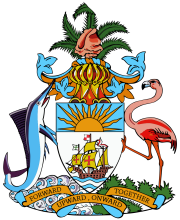Resource information
This Act makes provision for land use planning and regulates the subdivision of land. The objects and purposes of this Act are to: (a) provide for a land use planning based development control system based on policy, land use designations and zoning; (b) prevent indiscriminate division and development of land; (c) ensure the efficient and orderly provision of infrastructure and services to the built environment; (d) promote sustainable development in a healthy natural environment; (e) maintain and improve the quality of the physical and natural environment; (f) protect and conserve the natural and cultural heritage of The Bahamas; (g) provide for planning processes that are fair by making them open, accessible, timely and efficient; (h) recognize the decision making authority and accountability of the Government in land use planning; and (i) plan for the development and maintenance of safe and viable communities.The Act provides of the appointment by the Governor-General of the Town Planning Committee and the Director of Physical Planning and the creation of the Department of Physical Planning. There shall also be a Subdivision and Development Appeal Board which shall be appointed by the Governor-General. In considering any application the Committee shall take into account criteria relating to, among other things: conformity to the National Land Use Development Policies; the conservation of natural resources; the preservation of environmentally sensitive land, including wetlands; flood control; and the suitability of the land for the purpose for which it is to be developed. An Environmental Impact Statement is required to be submitted to the Department for specified proposed types of development. It shall be prepared in accordance with standards prescribed by the Minister. The Governor-General may, from time to time, adopt National Land Use Development Policies on matters relating to land use planning that are of national interest. There shall be a Land Use Plan a Zoning Bye-Law for each island of The Bahama. All development shall be subject to site plan control unless exempt by the Director. Acts regarding subdivisions require a Subdivision Approval by the Committee.The Second Schedule sets out matters that shall be dealt with by Land use Plans. They include: allocation of lands for: (a) communal parks; (b) game and bird sanctuaries; (c) the protection of marine life; and (d) national parks and environmental protected areas; protection of forests and the coastal zone; and zoning of marine parks, special resource and special use areas. Other features to be protected are water resources and in particular groundwater.
Implemented by: Planning and Subdivision (Application Requirements) Regulations, 2011 (No. 1 of 2011). (2011)
Implemented by: Subdivision and Development Appeal Board Rules, 2011 (S.I. No. 3 of 2011). (2011-01-04)
Implemented by: Department of Physical Planning Regulations, 2011 (S.I. No. 4 of 2011). (2011-01-04)
Implemented by: Town Planning Committee Rules, 2011 (S.I. No. 4 of 2011). (2011-01-04)
Repeals: Private Roads and Sub-divisions (Out Islands) Act (Cap. 257). (1987)
Repeals: Private Roads and Sub-divisions Act (Cap. 256). (1987)
Repeals: Town Planning Act (Cap. 255). (1995)



